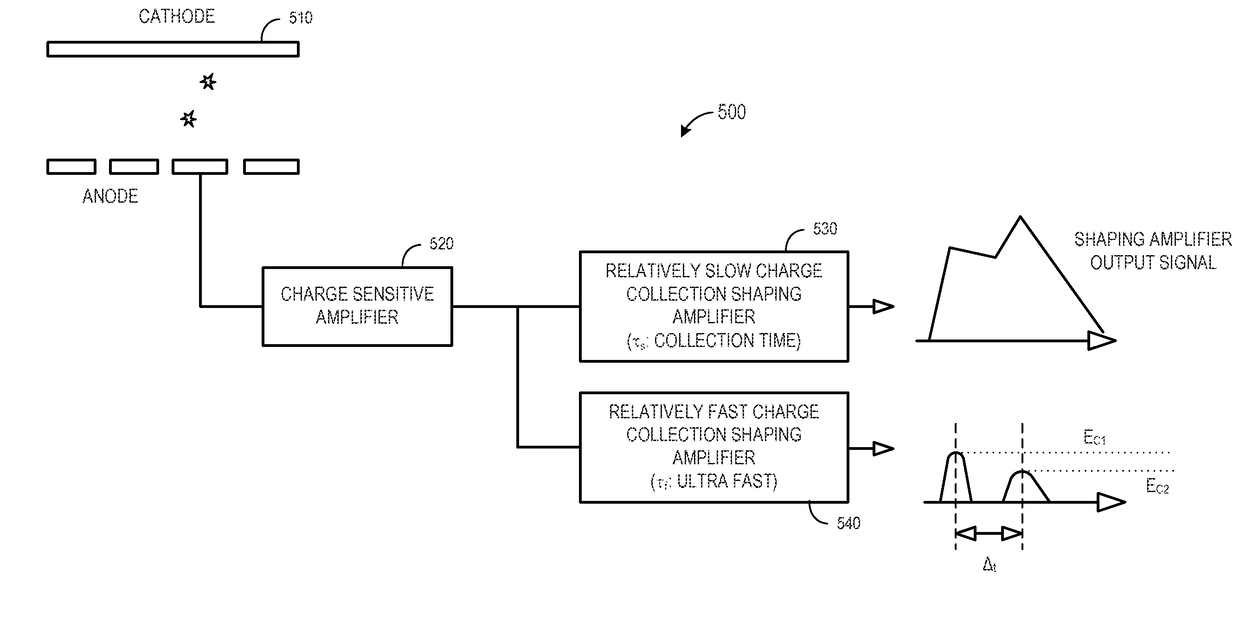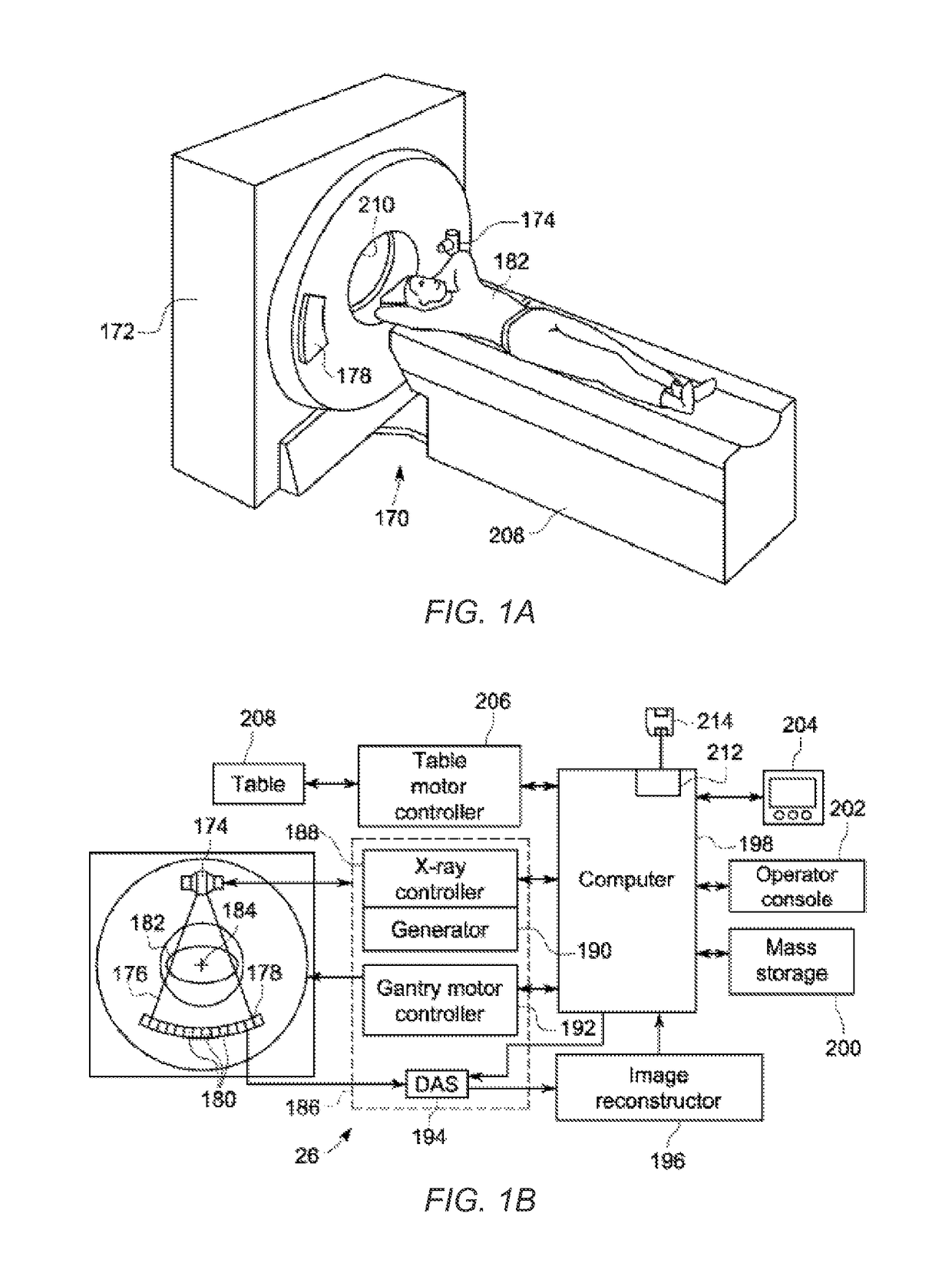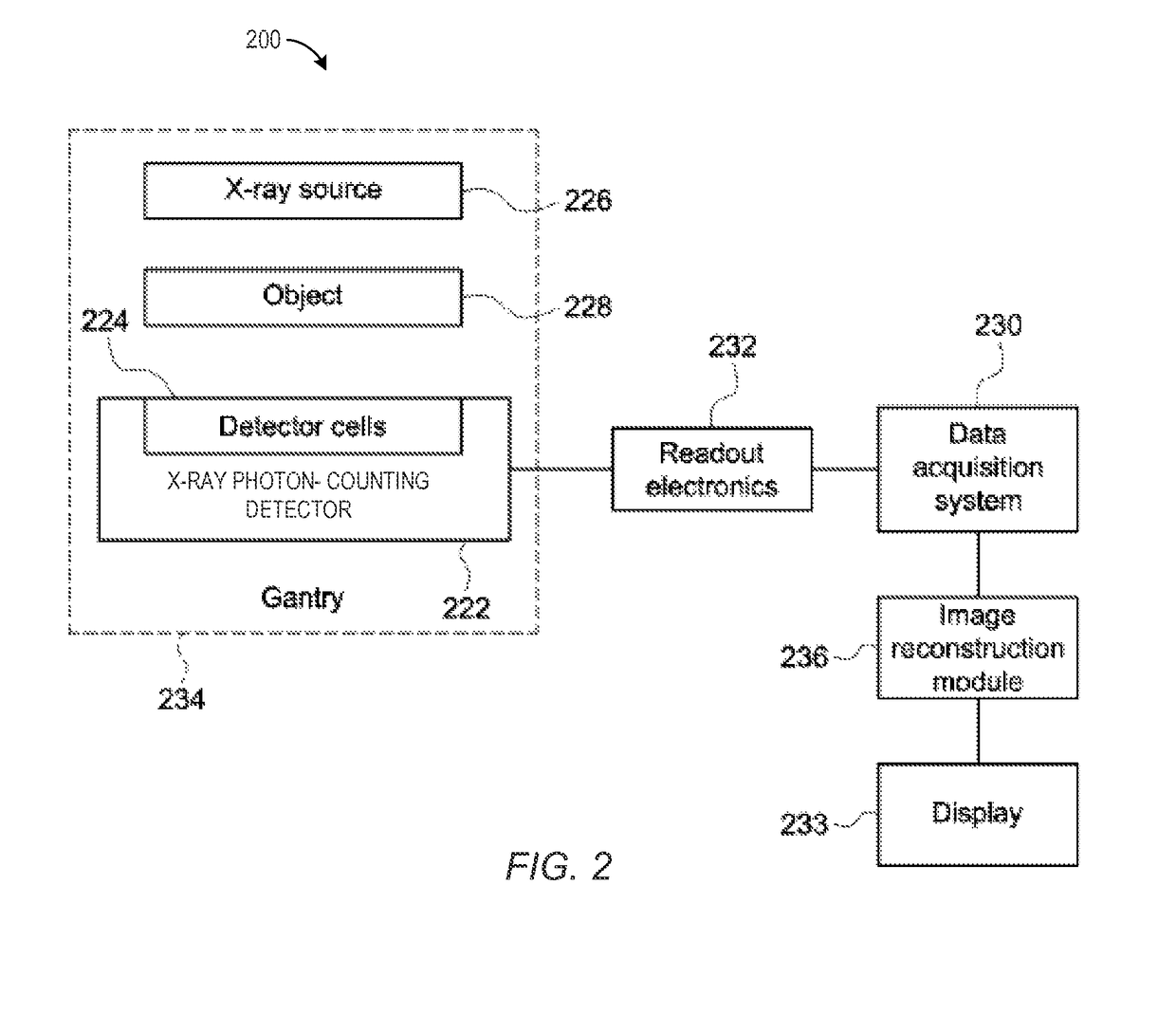Apparatus and method for pile-up correction in photon-counting detector
a detector and pileup technology, applied in the field of detectors, can solve the problems of reducing the quality of the generated image, affecting the detection accuracy of the detector, and unable to determine which x-ray detection event is associated with each particular photon, so as to achieve the effect of improving the accuracy of information captur
- Summary
- Abstract
- Description
- Claims
- Application Information
AI Technical Summary
Benefits of technology
Problems solved by technology
Method used
Image
Examples
embodiment 800
[0050]In the “multiple-threshold mode,” a relatively fast charge collection shaping amplifier (high-bandwidth, band-pass filter) may record a photon in one of a plurality of energy bins based on an energy threshold, and the number of photons in each bin is then used to allocate the first portion of the total amount of energy to the first event and the second portion of the total amount of energy to the second event. FIG. 8 illustrates a multi-bin embodiment 800 in accordance with some embodiments. In this embodiment, standard slow shaper and ADC or Charge-to Digital Convertor (“QDC”) output at 810 are used, along with validation of the signal from a fast shaper signal, to determine if there was a pile-up condition at 820. If there was no pile up, all of the energy (ETOTAL) is associated with a single event at 830.
[0051]If there was a pile-up condition at 820, thresholds may be applied at 840 and a photon might be assigned to one of a number of bins. For example, in the case of pile-...
embodiment 1000
[0056]In the “time correction mode,” a first timing value may be recorded in connection with the first event and a second timing value may be recorded in connection with the second event, and the allocation of ETOTAL is further apportioned based on the first and second timing values. For example, the difference between the two time values may be used to apply a second-order correction on the signal. FIG. 10 illustrates an embodiment 1000 utilizing a timing difference correction in accordance with some embodiments. As before, standard slow shaper and ADC (or QDC) output at 1010 are used, along with validation of the signal from a fast shaper signal, to determine if there was a pile-up condition at 1020. If there was no pile up, all of the energy (ETOTAL) is associated with a single event at 1030. Moreover, the two fast signals are used to allocate E1 and E2 at 1040 and 1050 as described with respect to steps 940 and 950 in FIG. 9.
[0057]According to some embodiments, this mode adds ex...
PUM
 Login to View More
Login to View More Abstract
Description
Claims
Application Information
 Login to View More
Login to View More - R&D
- Intellectual Property
- Life Sciences
- Materials
- Tech Scout
- Unparalleled Data Quality
- Higher Quality Content
- 60% Fewer Hallucinations
Browse by: Latest US Patents, China's latest patents, Technical Efficacy Thesaurus, Application Domain, Technology Topic, Popular Technical Reports.
© 2025 PatSnap. All rights reserved.Legal|Privacy policy|Modern Slavery Act Transparency Statement|Sitemap|About US| Contact US: help@patsnap.com



